Today’s warm-up included some Valentine’s Day-themed puzzles from Mashup Math. I really liked the third puzzle because it tied in the perimeter and area piece that we had been working on the day before with the tangrams.

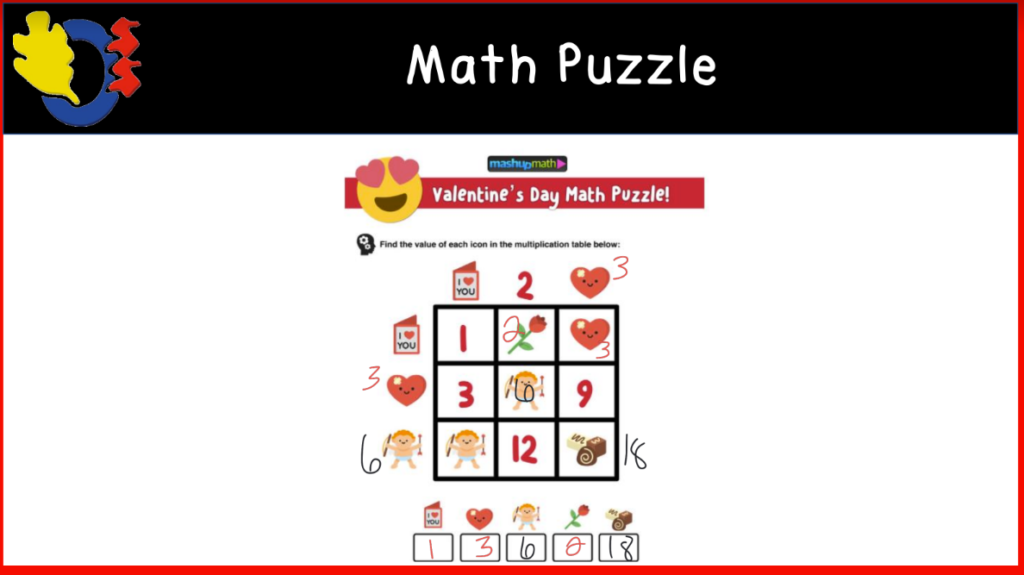
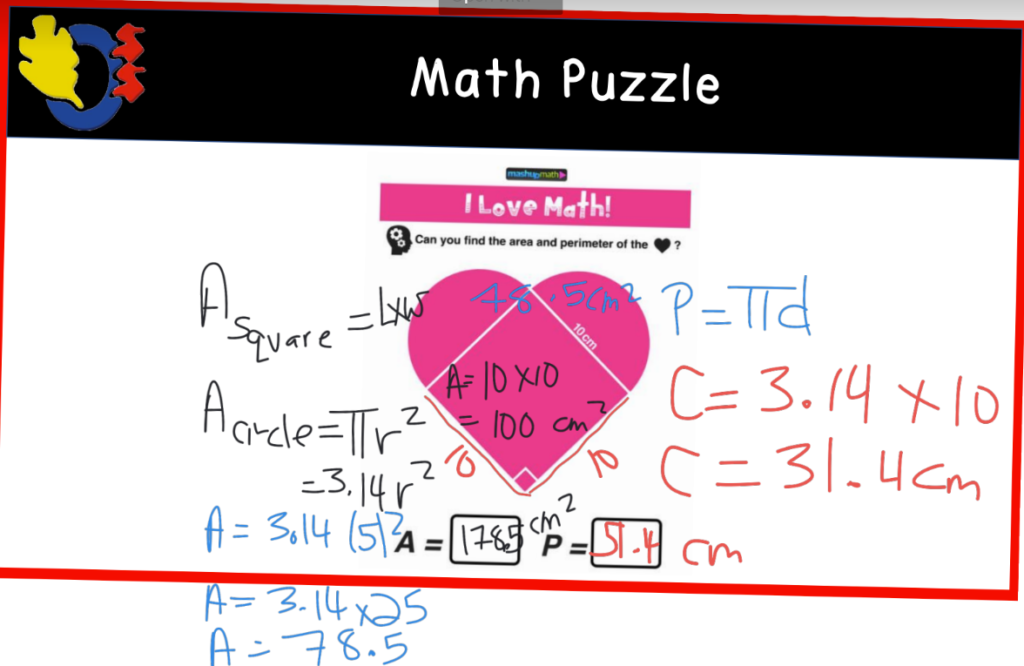
After our warm-up with the personal whiteboards was finished, I had students choose cards randomly and get into groups for the next task. I had strings attached to magnetic clips posted around the room on the magnetic whiteboards so that each group had a set of parallel number lines to work with. Next, I gave each group a stack of cards and told them their task was to put the cards into a logical mathematical order. With that, they set to work. The first set of cards was the hardest because some groups struggled to understand how the cards were connected. Once they got the hang of it they were able to work through the next questions much quicker.
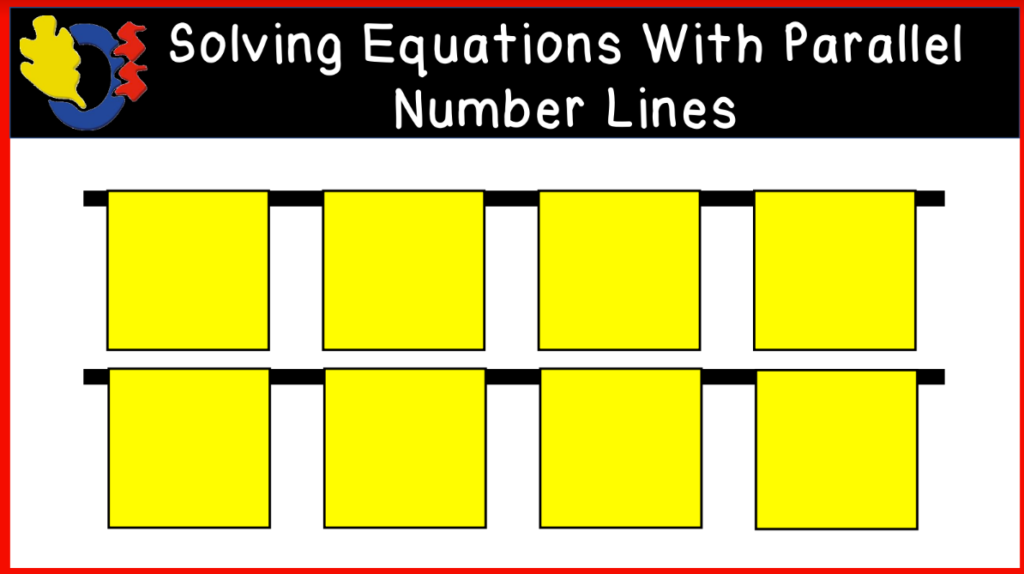
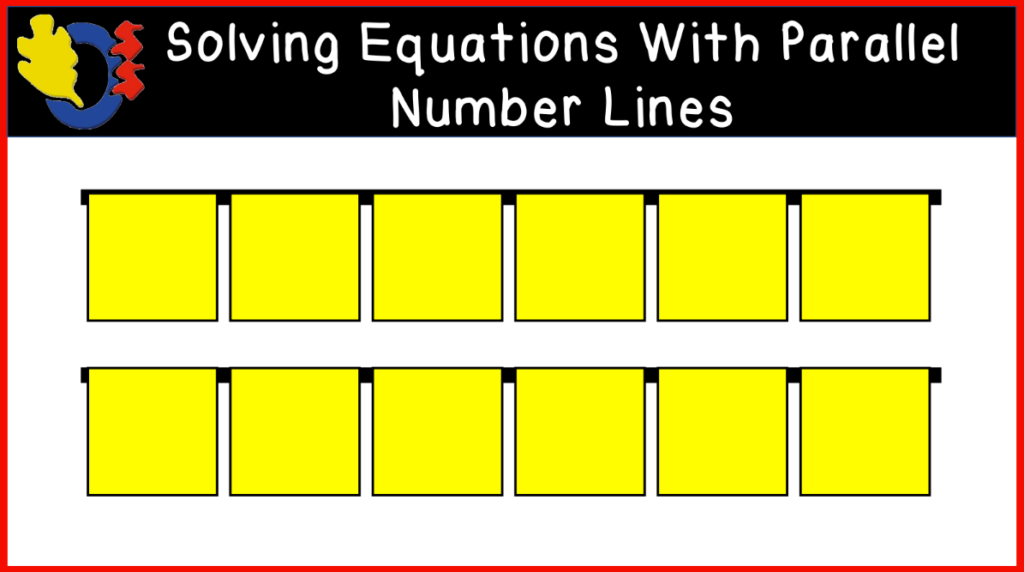
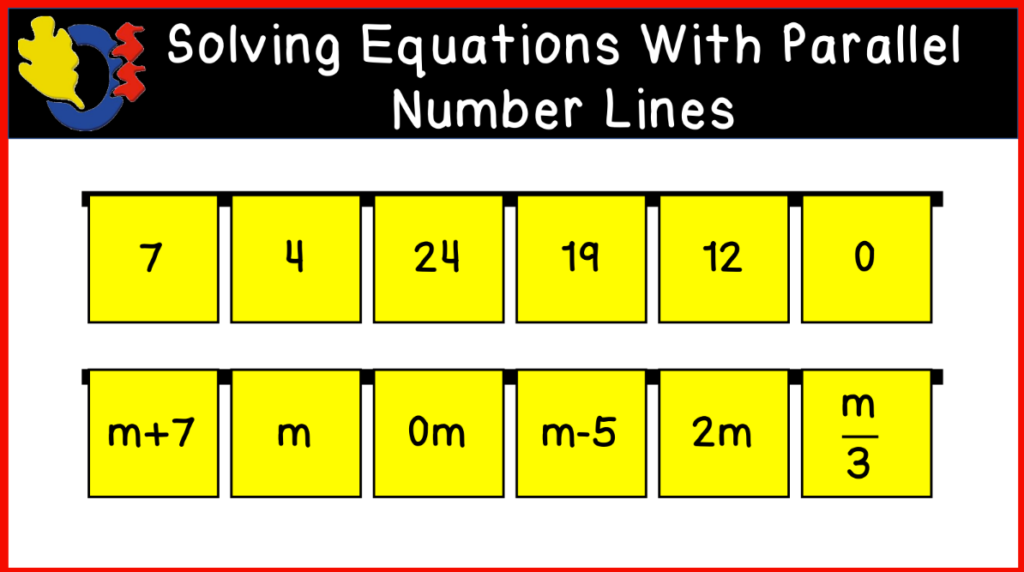
For the next sets of questions, they used dry erase cards and could write the items on the card and then hang them on the number lines. I projected the question on the main board and they could arrange their terms in a logical order to determine what 1x was equal to.
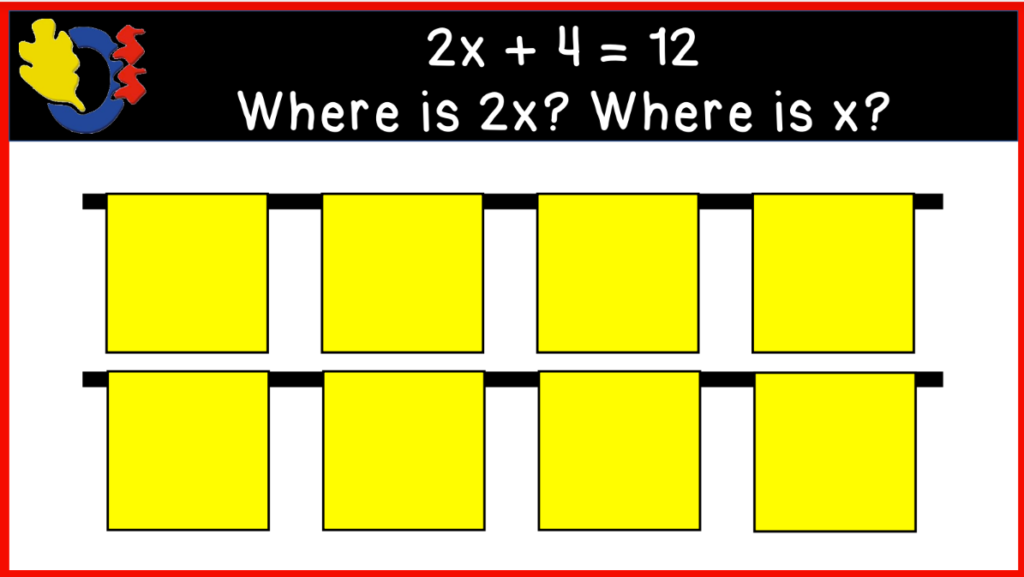
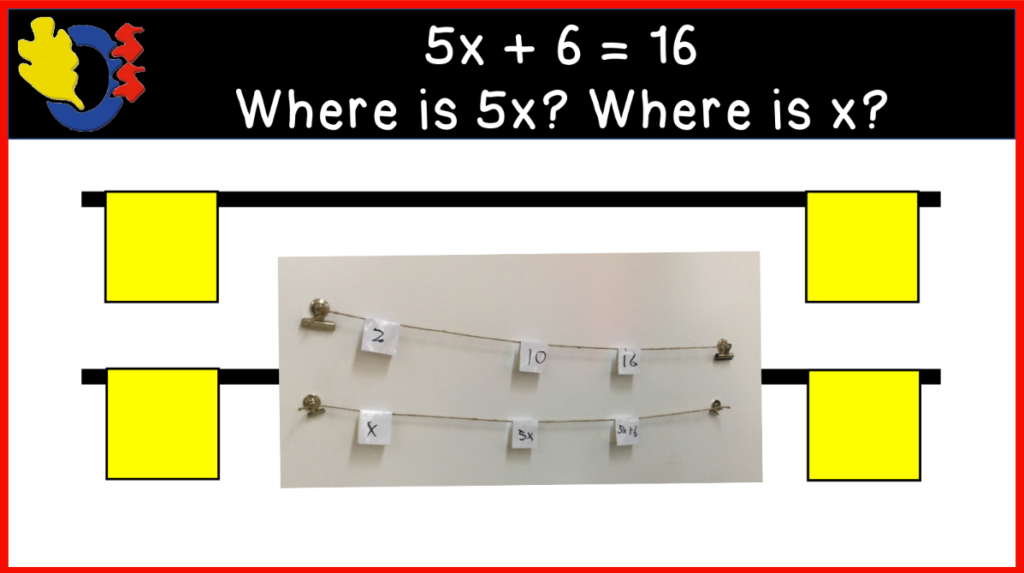
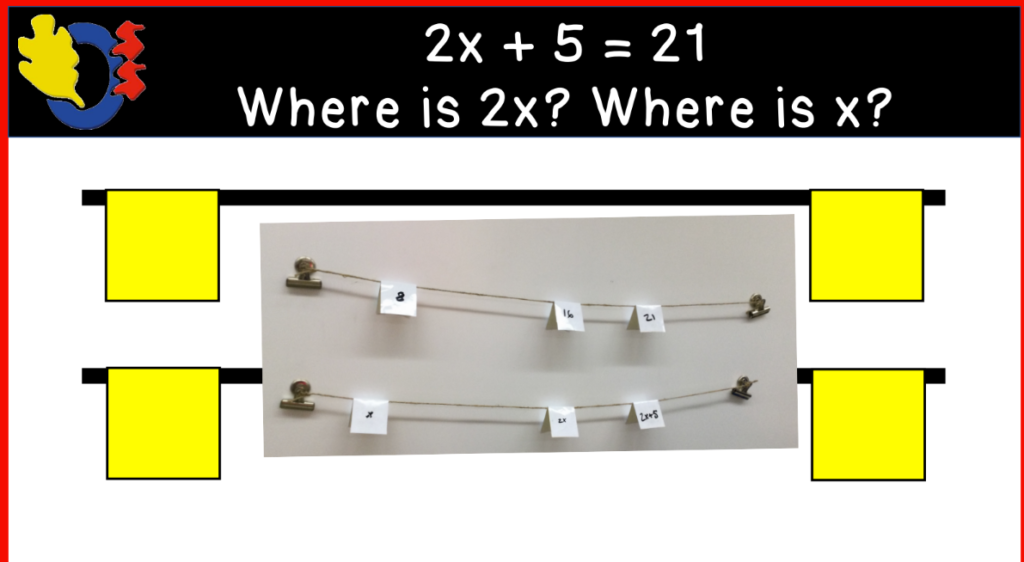
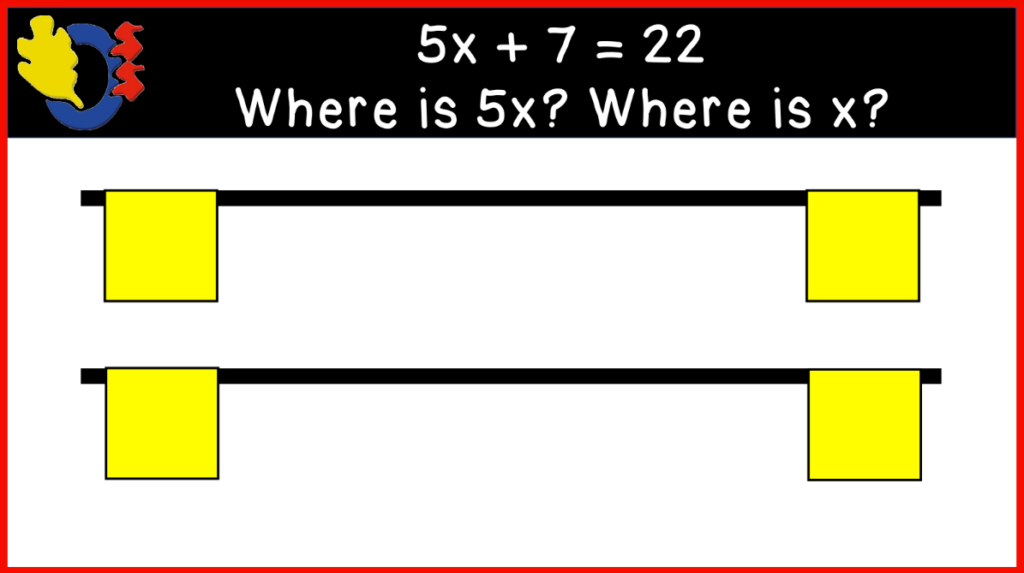

I wanted to give students a fraction to see if they could figure out the value of 1x. This strategy to solve equations using a double number line seemed pretty intuitive for most students.
That wrapped up the lesson for day 6, but my mind was racing with trying to find a way to reinforce this concept of the double number line. We didn’t have a textbook for the new MTH1W course, so I set to work that night to make a self-checking Boom CardsTM deck for my class to use the next day. The deck can be found here.
I hope something in this post was able to help you on your teaching journey.
Have a wonderful day!